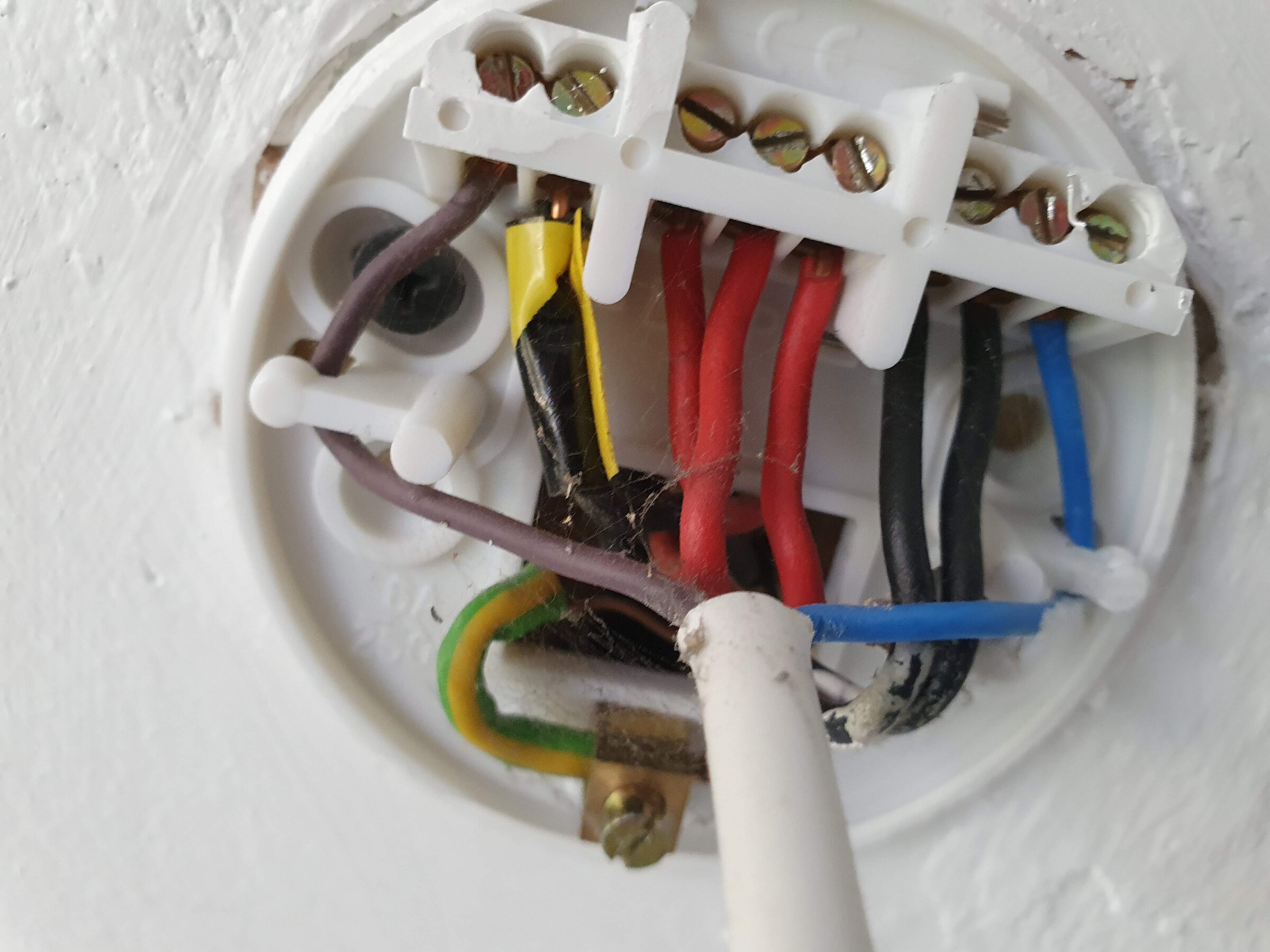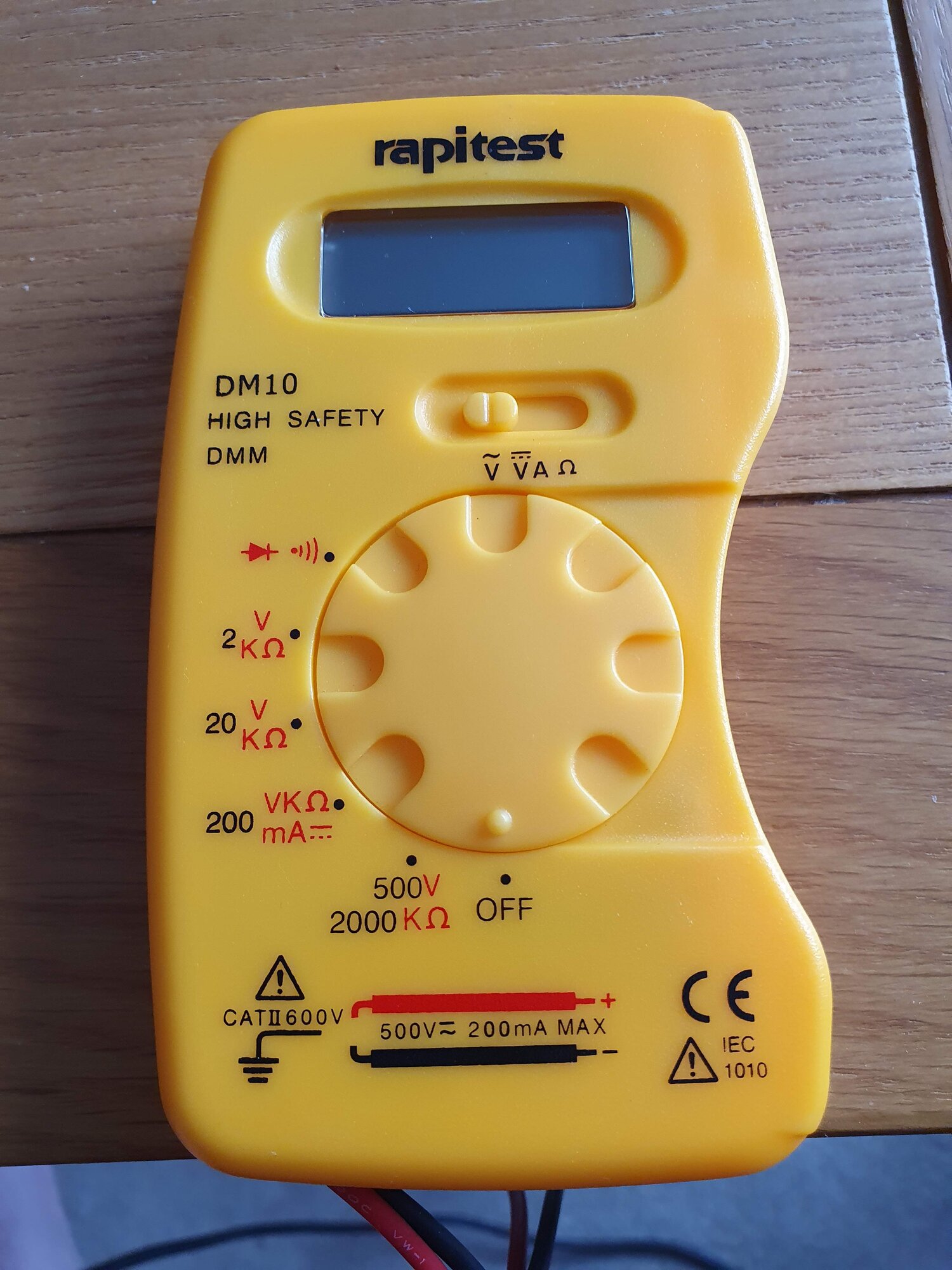I've bought a pendant light and it has different wiring to the old one, the new one using a terminal block inside the metal housing. I've done some research into how to change over the wiring, but wanted to run it past the experts on here to make sure my understanding is correct.
This is the old ceiling rose:
It's not clear from the pic, but three earth wires go into that one visible sleeve. Also, I assume that the wire with the black and yellow sleeve is the switched live.
This is the new one:
I think I need to do the following:
1. After switching off the electricity supply, disconnect the wiring from the old rose backing plate, remove it and replace with the metal bar that came with the new light - this will hold the new rose in place.
2. Connect the switched live wire to the live connector in the new terminal block.
3. Connect the three earth wires (in the single sleeve) to the earth connector in the terminal block.
4. Connect the two neutral wires (black sleeves) to the neutral connector in the terminal block.
5. Do something with the three red-sleeved live wires. This is where I'm unclear. Should I buy a 3-connection Wago terminal block and secure them in that? If so, is it OK to just leave that loose inside the new light's housing? It looks big enough for that.
Thanks.
This is the old ceiling rose:
It's not clear from the pic, but three earth wires go into that one visible sleeve. Also, I assume that the wire with the black and yellow sleeve is the switched live.
This is the new one:
I think I need to do the following:
1. After switching off the electricity supply, disconnect the wiring from the old rose backing plate, remove it and replace with the metal bar that came with the new light - this will hold the new rose in place.
2. Connect the switched live wire to the live connector in the new terminal block.
3. Connect the three earth wires (in the single sleeve) to the earth connector in the terminal block.
4. Connect the two neutral wires (black sleeves) to the neutral connector in the terminal block.
5. Do something with the three red-sleeved live wires. This is where I'm unclear. Should I buy a 3-connection Wago terminal block and secure them in that? If so, is it OK to just leave that loose inside the new light's housing? It looks big enough for that.
Thanks.




